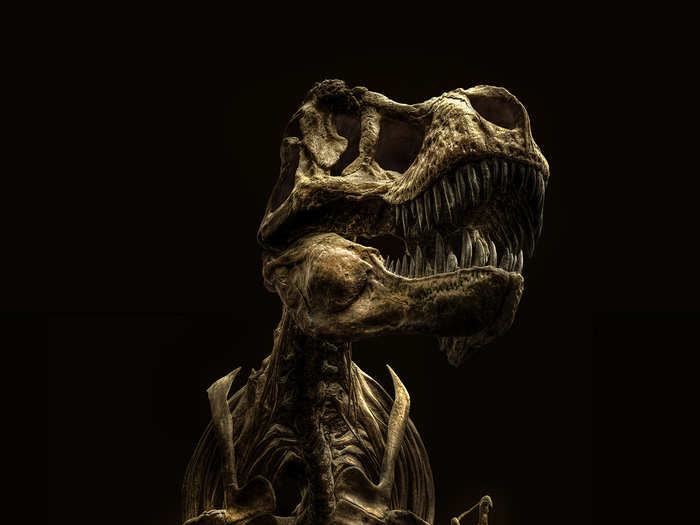
The T. rex had orange-sized eyes that faced forward like a hawk's and were spread apart on its face, giving it superior depth perception during a hunt.

Voigt photographed this T. Rex, Rocky, at the Dinosaur Museum Altmühltal in Denkendorf, Germany.
A full-grown Tyrannosaurus rex weighed about 6 to 9 tons. It stood about 12 to 13 feet tall at the hip and was about 40 to 43 feet long.

The predator used its massive jaws, filled with sharp teeth that constantly grew back, to hunt prey. The T. rex could bite through solid bone and digest it.

Voigt captured this photo in the Museum of Natural History in Berlin, Germany.


The saber-toothed tiger lived in North and South America between 2.5 million and 10,000 years ago. It was smaller than a modern-day lion, but weighed twice as much.


Stygimoloch is a type of pachycephalosaur: dinosaurs with thick domed skulls that males used to vye for dominance.
This skeleton is located in the Museum of Natural History in Berlin, Germany.

Pterosaurs were dinosaur relatives. This one was discovered in Sebes, a small village in Romanian Transylvania — hence its name. It can be found in the Dinosaur Museum Altmühltal in Denkendorf, Germany.

The fossil resides in the Senckenberg Naturmuseum in Frankfurt, Germany.

Voigt photographed this animal's four tusks (two on the upper jaw and two on the elongated lower jaw) in the Senckenberg Naturmuseum in Frankfurt, Germany.

"Those places have animal that are in perfect condition, and that's what I'm hunting for," he added.
That said, Voigt has captured many remarkable shots already, including this Stegosaurus at the Senckenberg Naturmuseum in Frankfurt, Germany. The image shows the animal's skeletal plates jutting out like sails from its back.

This skeleton is housed in the Museum of Natural History in Berlin, Germany.

This skeleton of an Euoplocephalus, a type of dinosaur with a club tail and armor-covered back, resides in the Senckenberg Naturmuseum in Frankfurt, Germany.

"We are part of the same evolution, living on the same planet," Voigt said. "The more time I spend with the dinosaur skeletons, the more I wonder what happened to them, and in turn, what will happen to us?"
 RBI Governor Das discusses ways to scale up UPI ecosystem with stakeholders
RBI Governor Das discusses ways to scale up UPI ecosystem with stakeholders
 People find ChatGPT to have a better moral compass than real humans, study reveals
People find ChatGPT to have a better moral compass than real humans, study reveals
 TVS Motor Company net profit rises 15% to ₹387 crore in March quarter
TVS Motor Company net profit rises 15% to ₹387 crore in March quarter

Copyright © 2024. Times Internet Limited. All rights reserved.For reprint rights. Times Syndication Service.